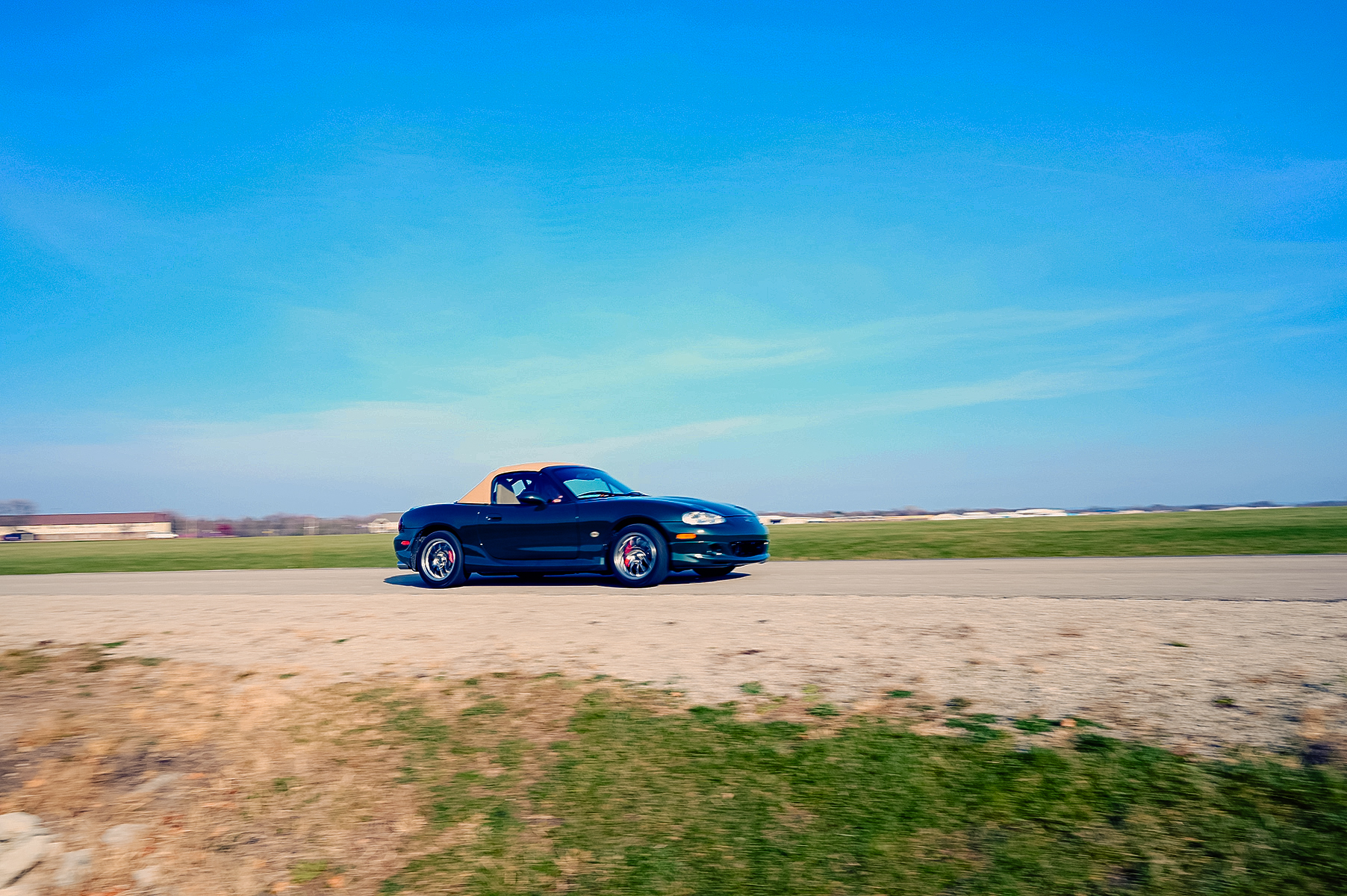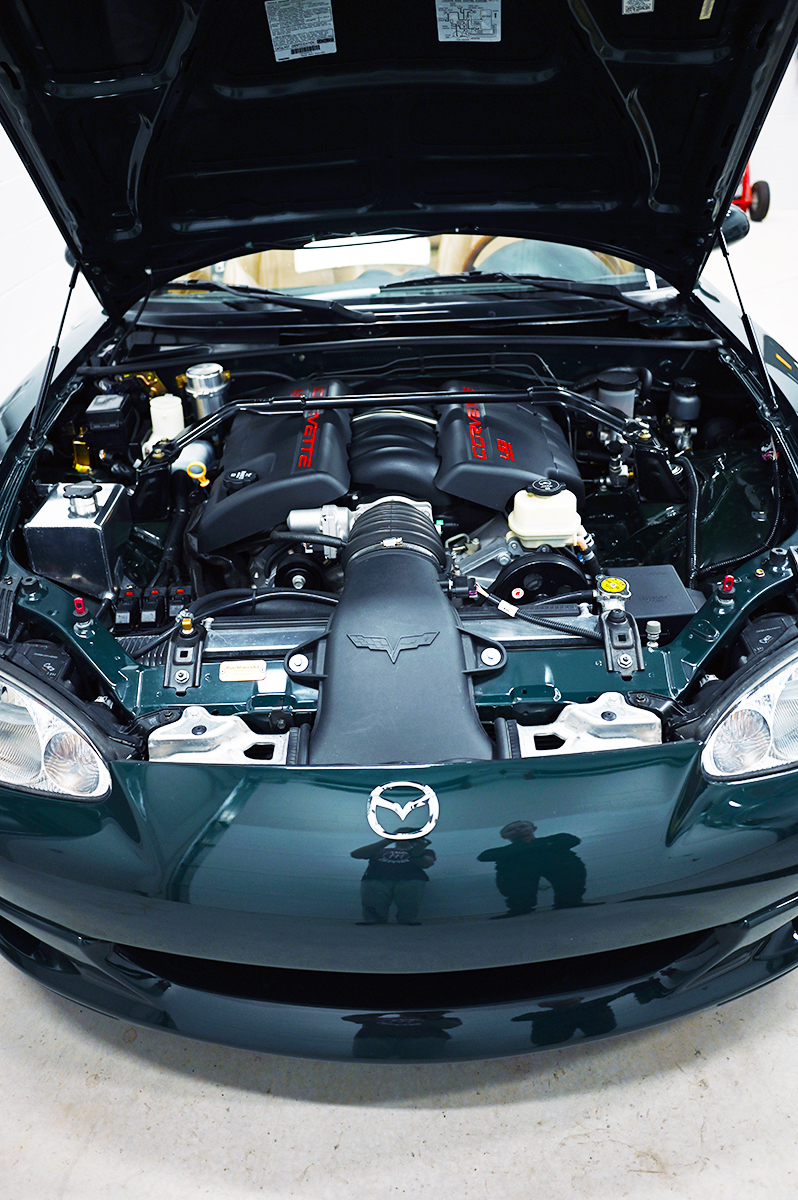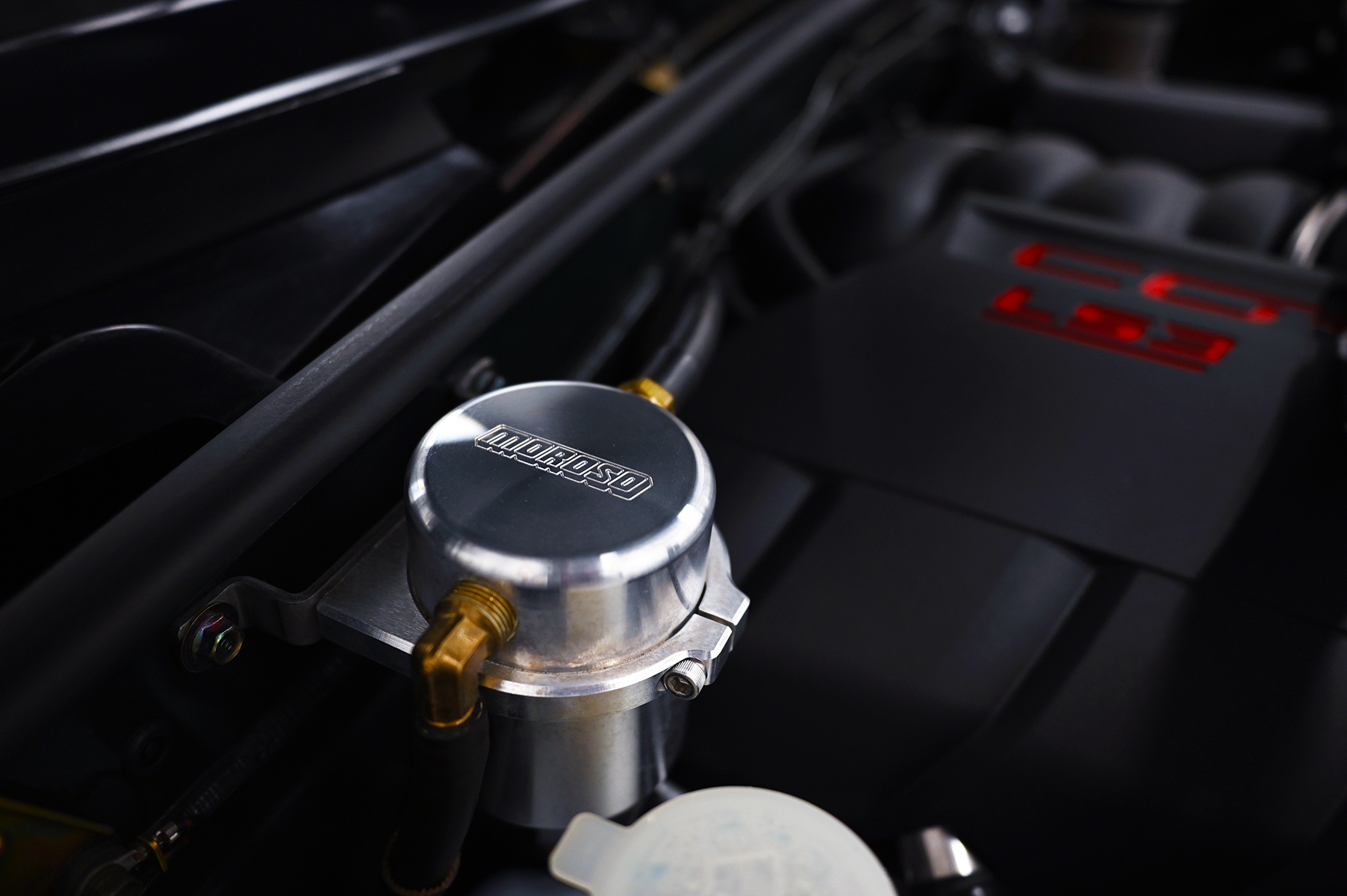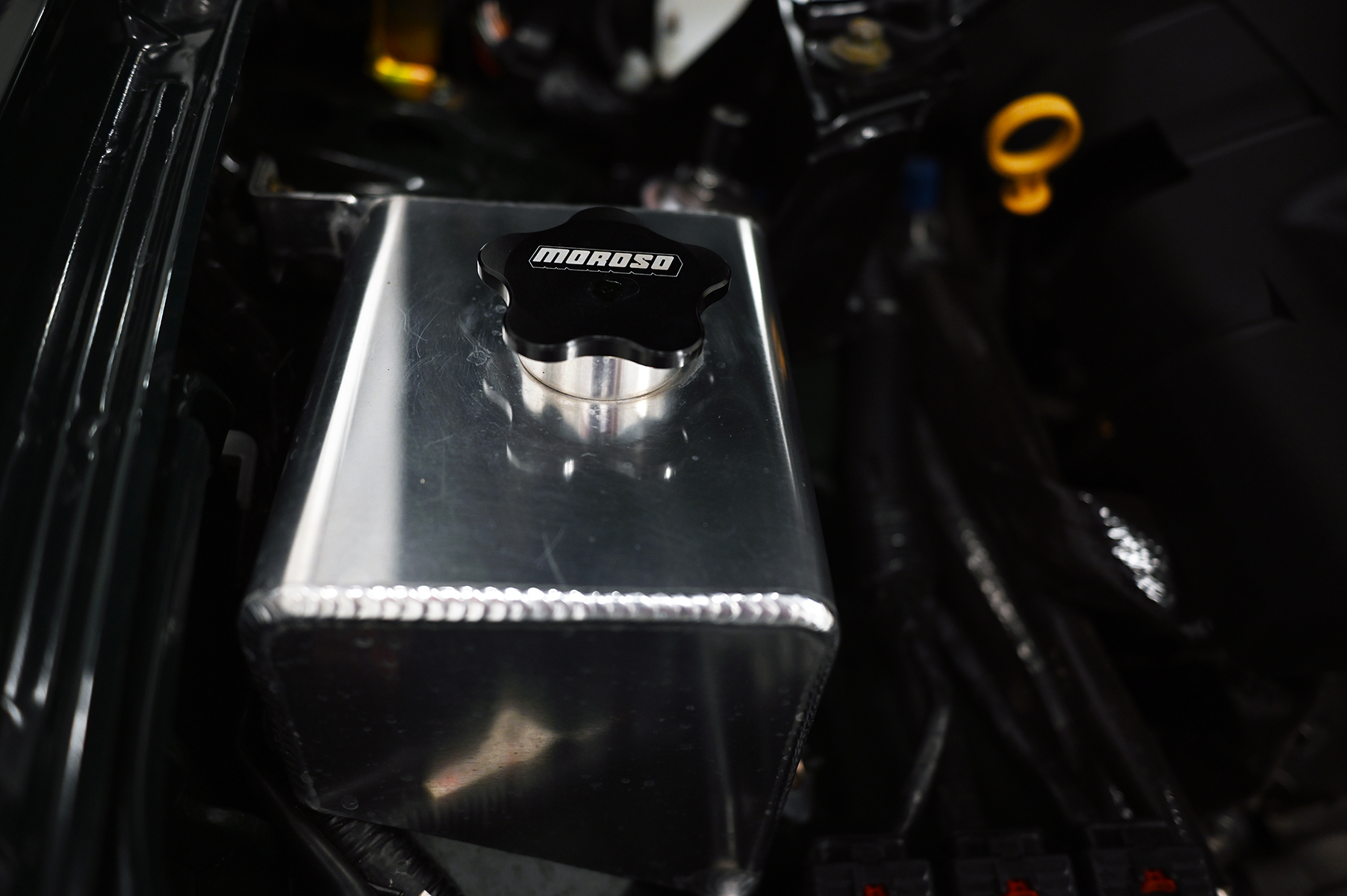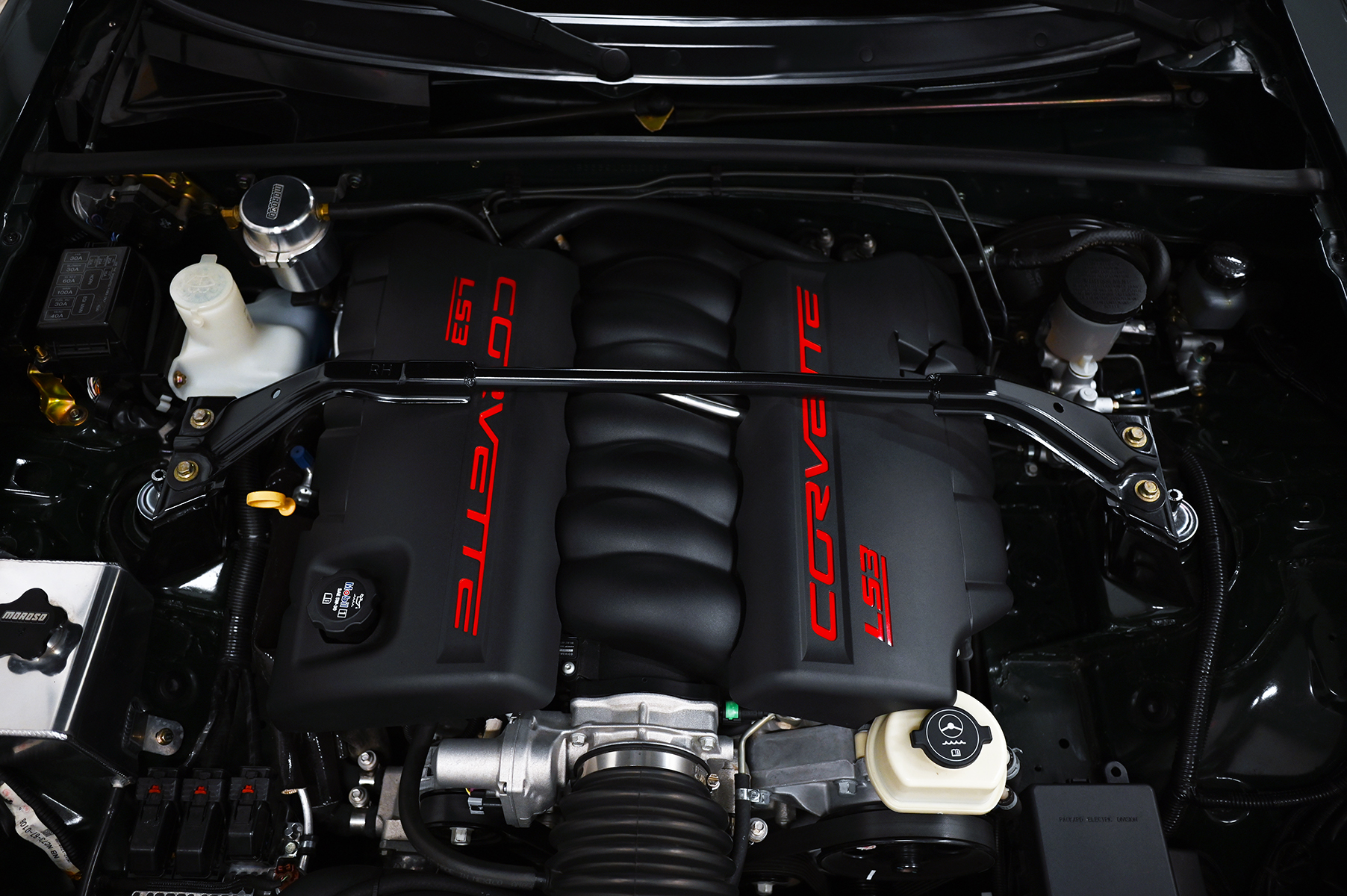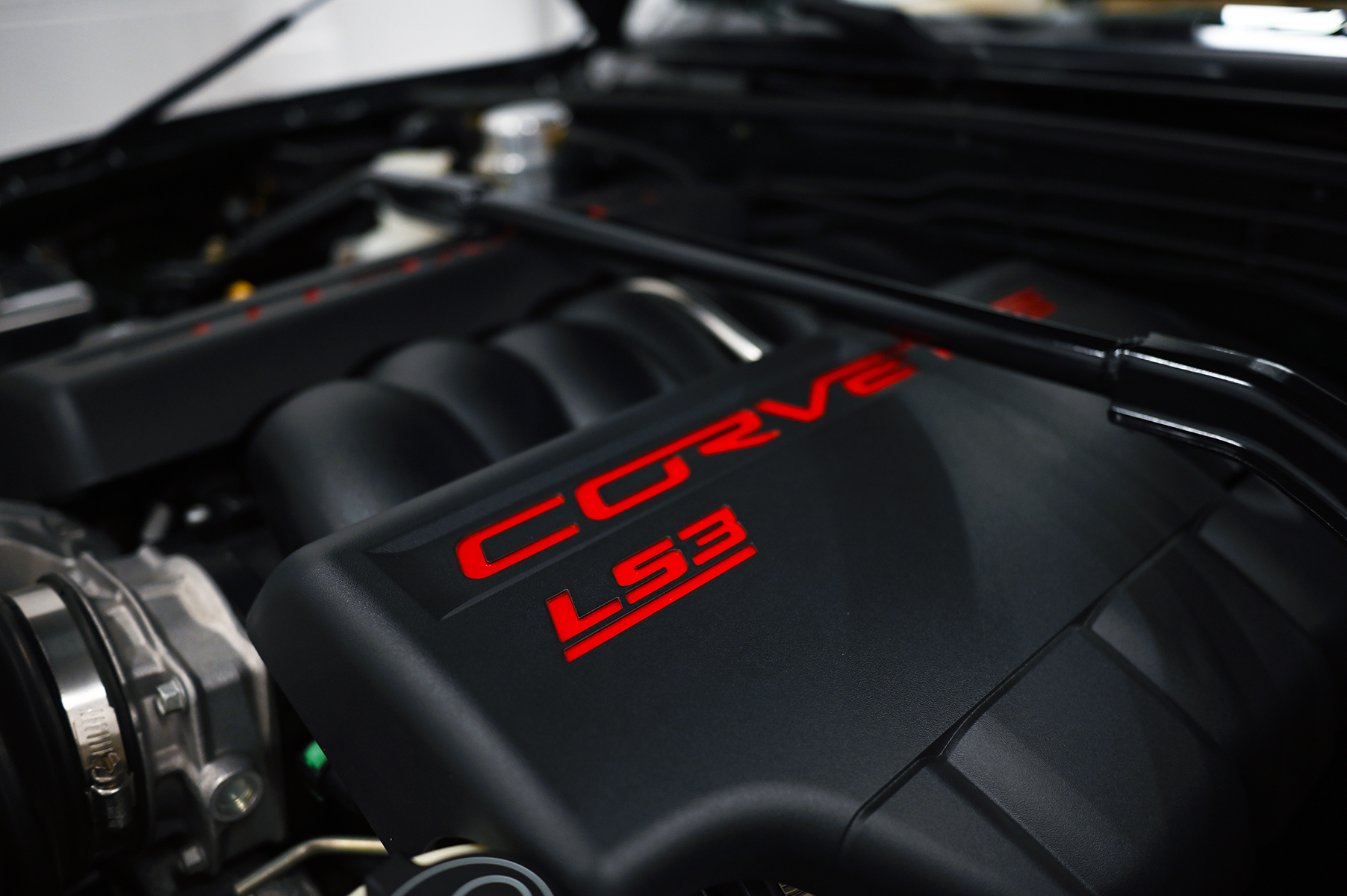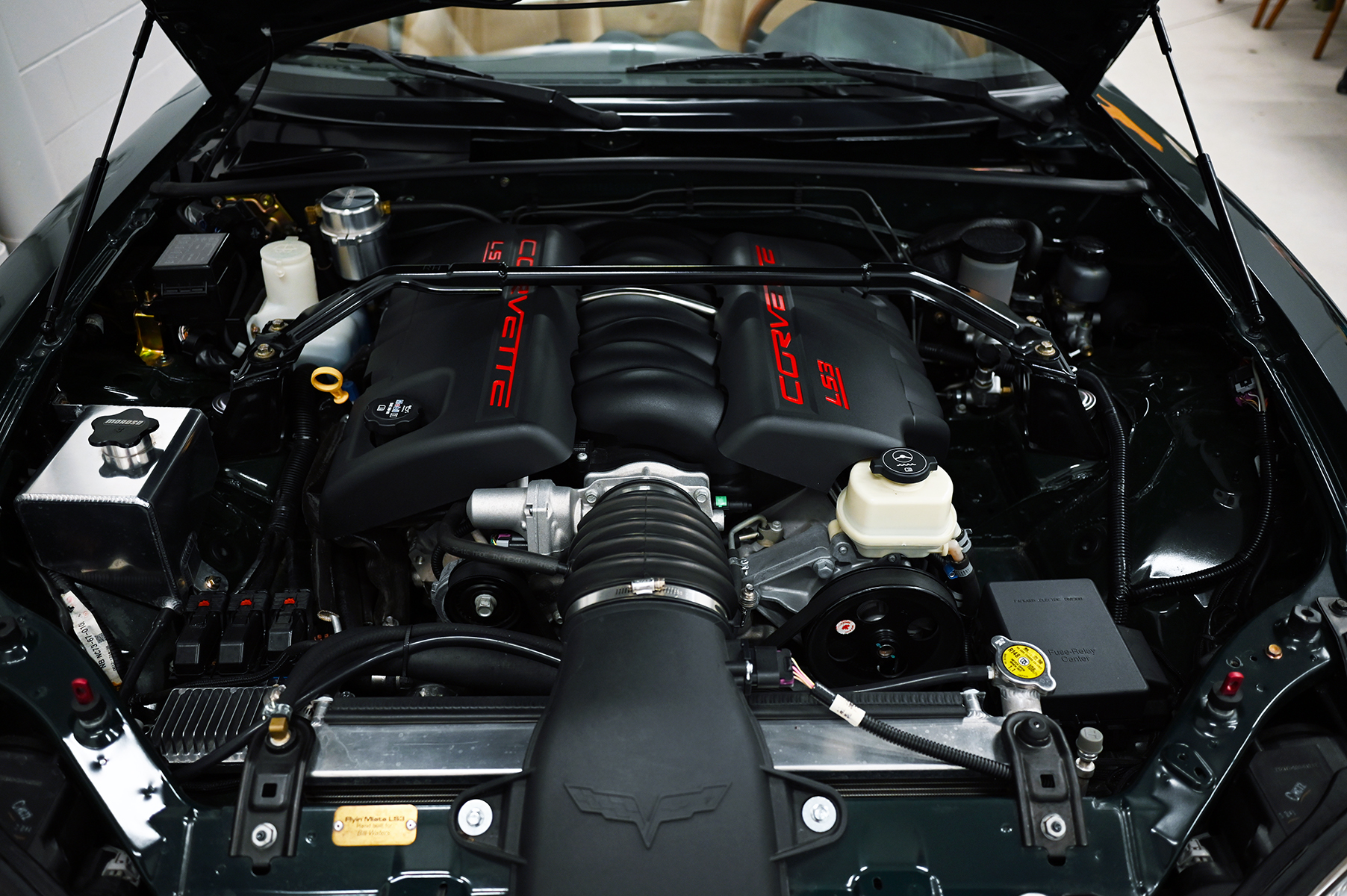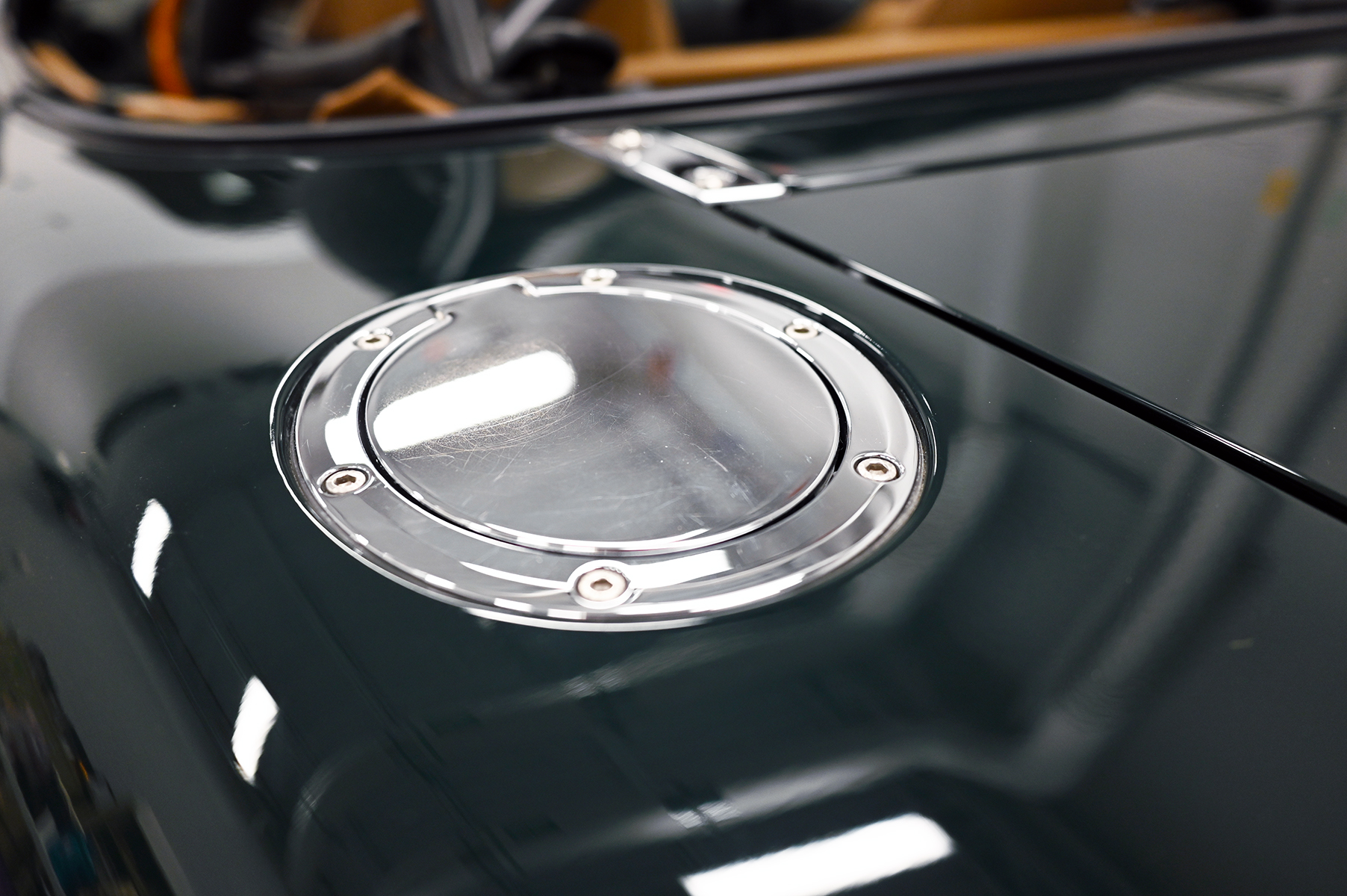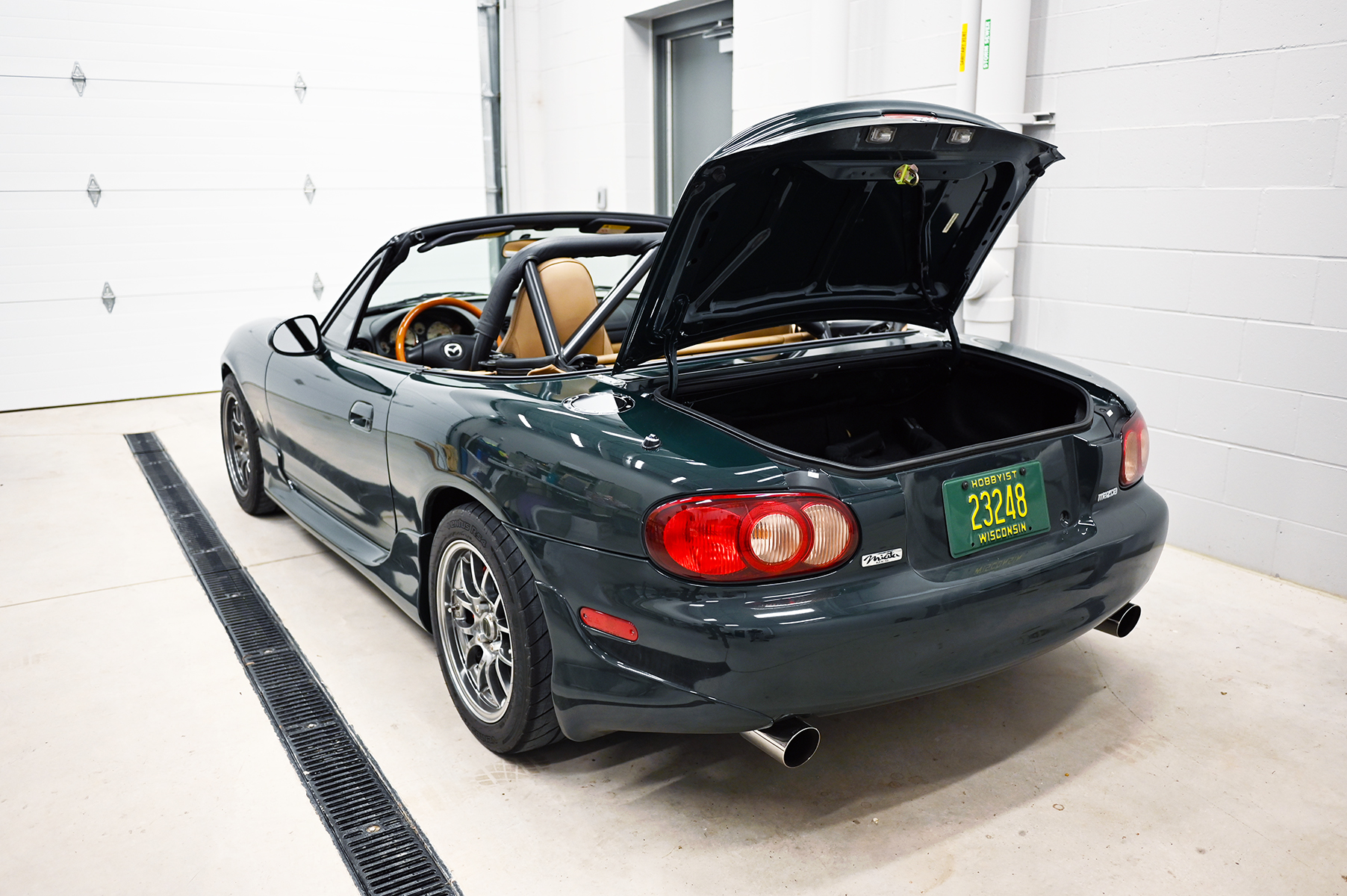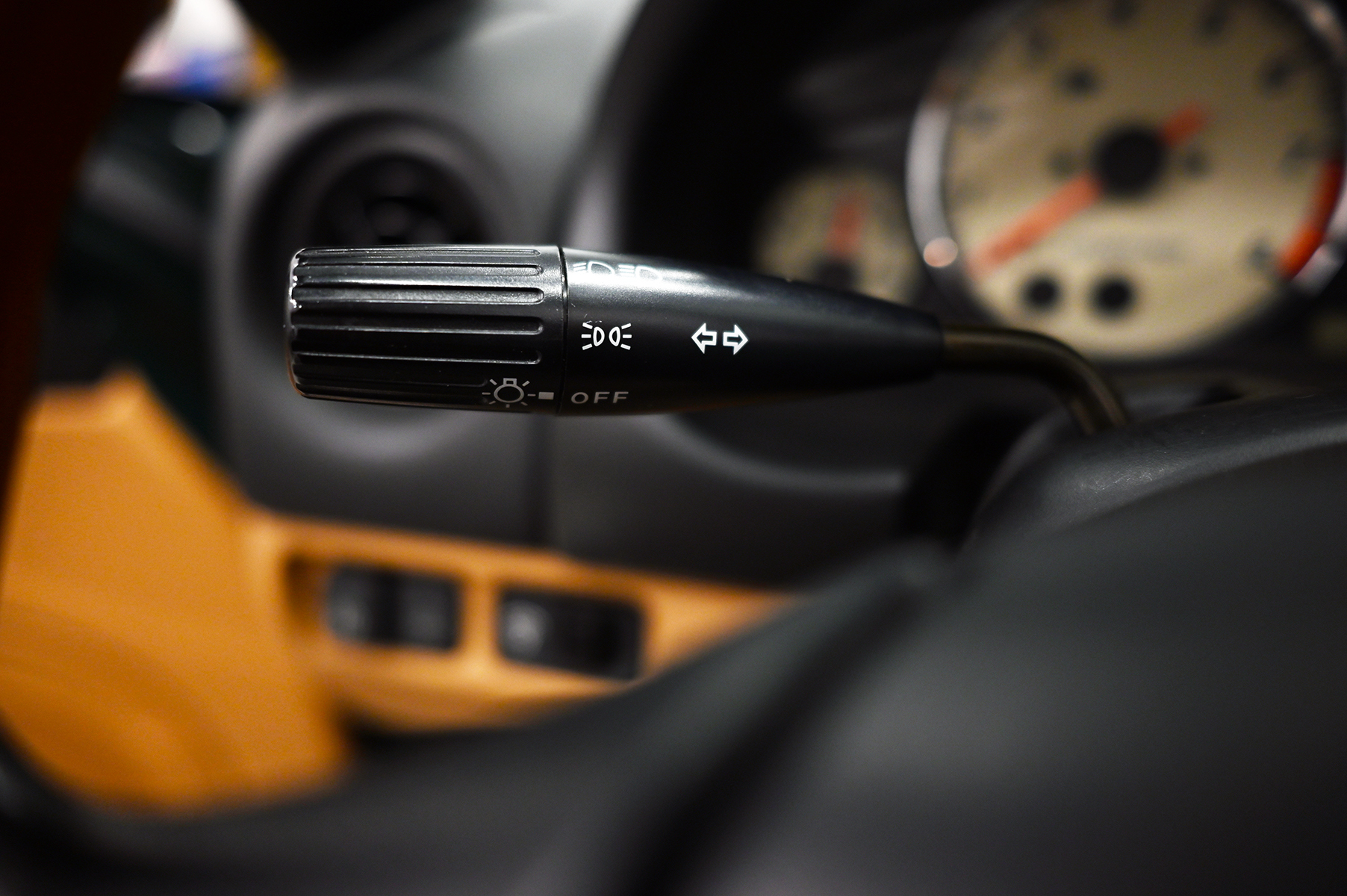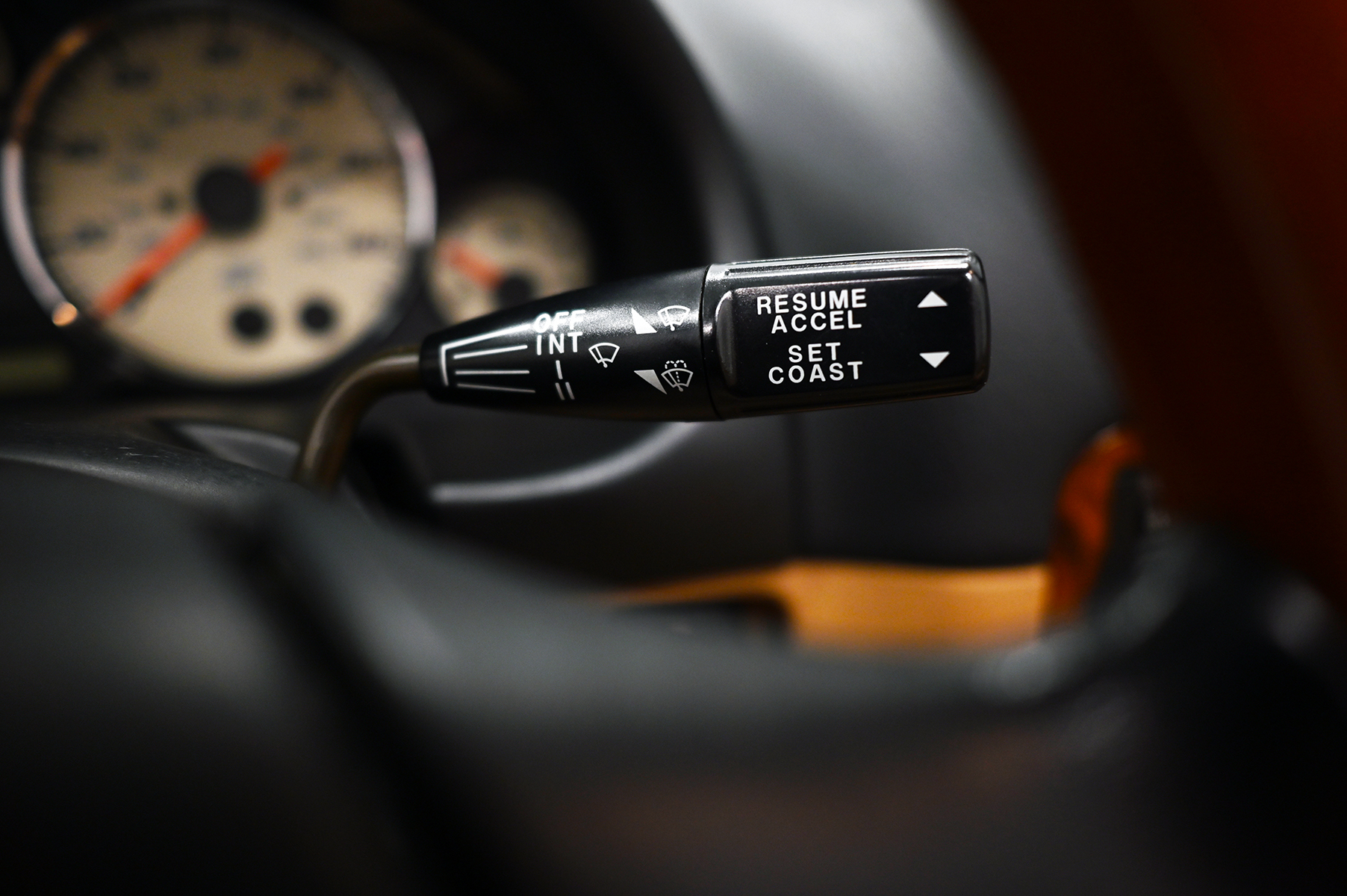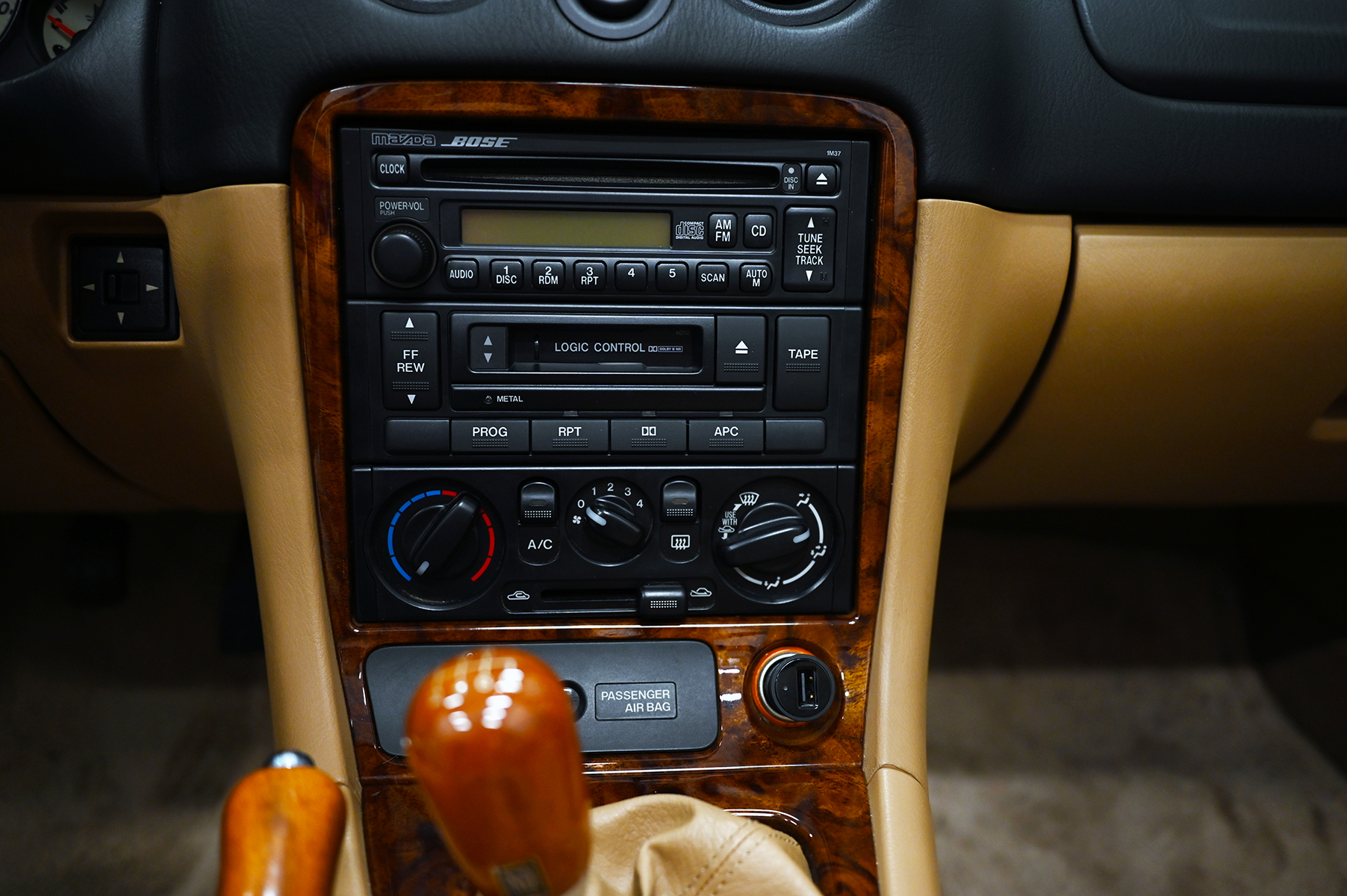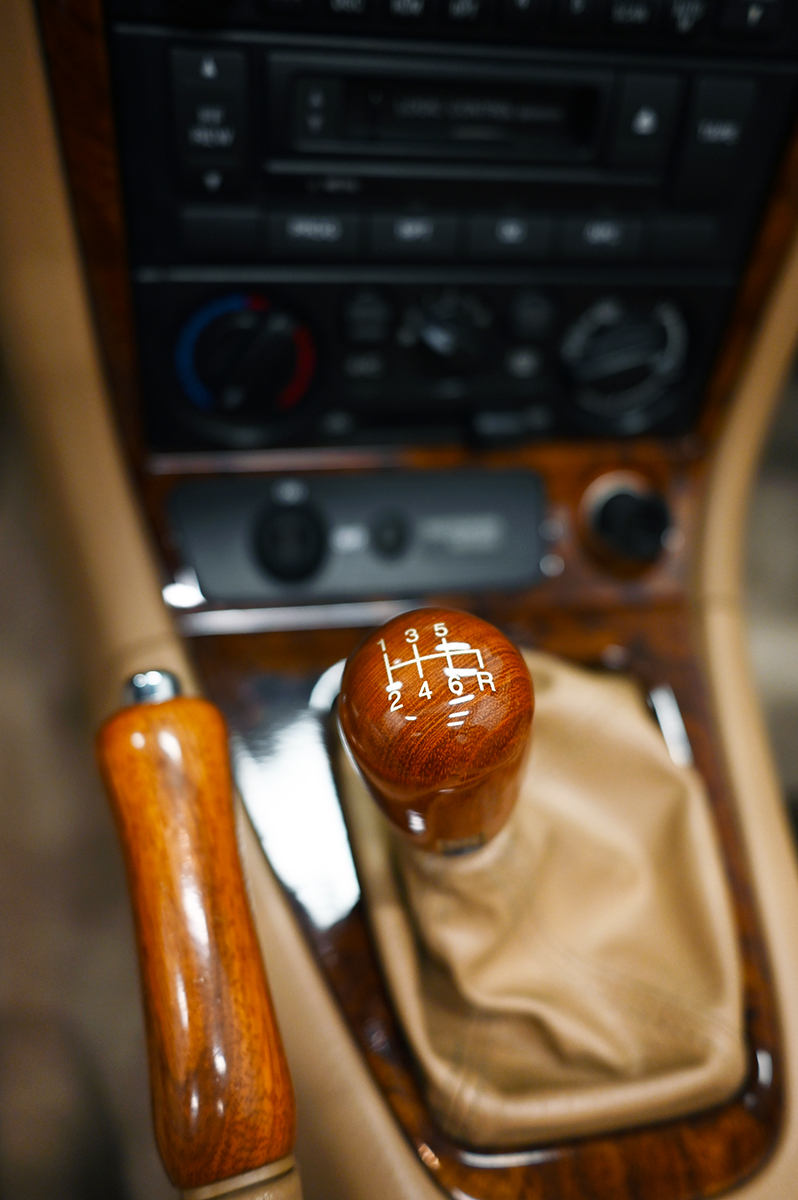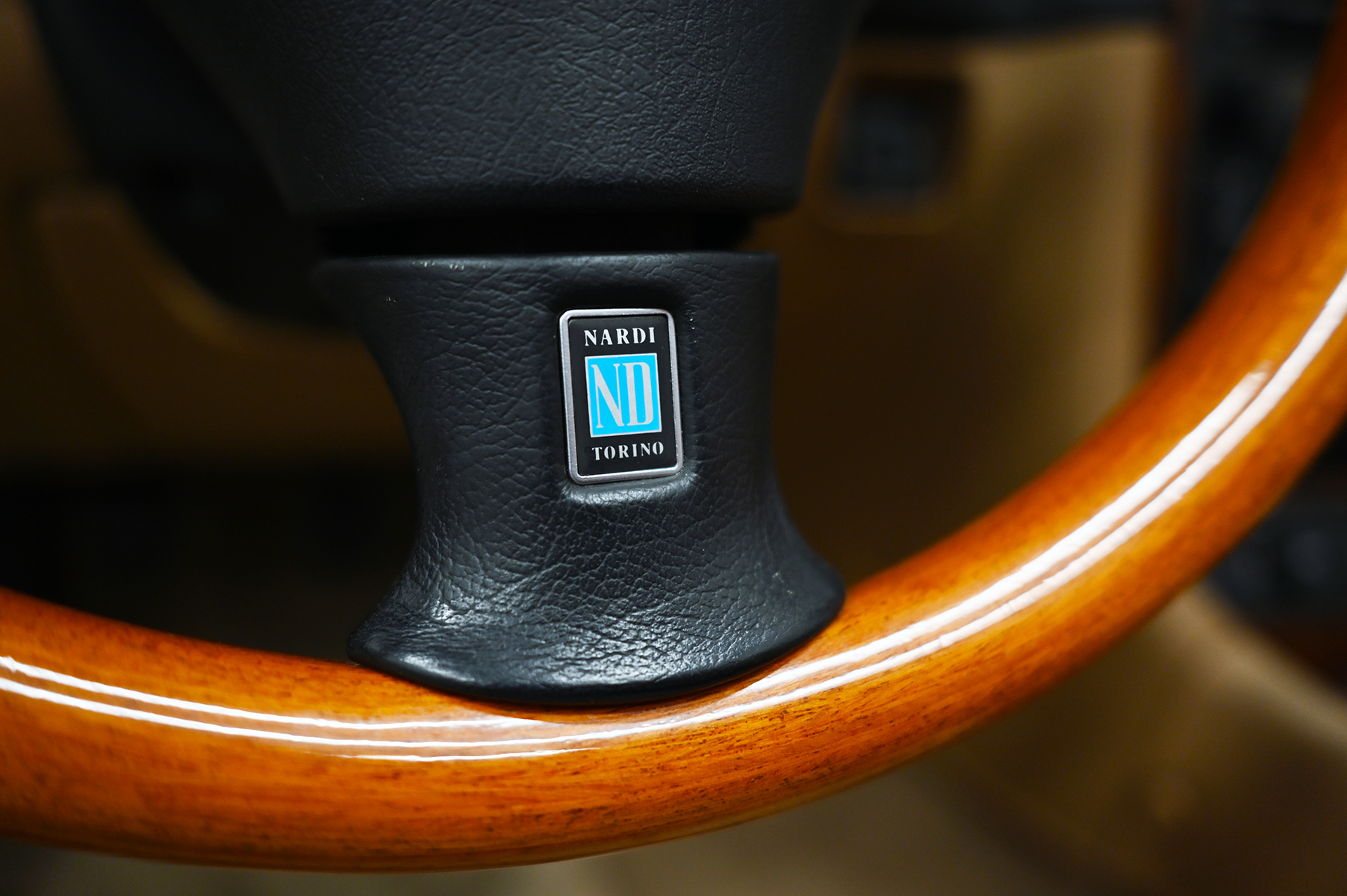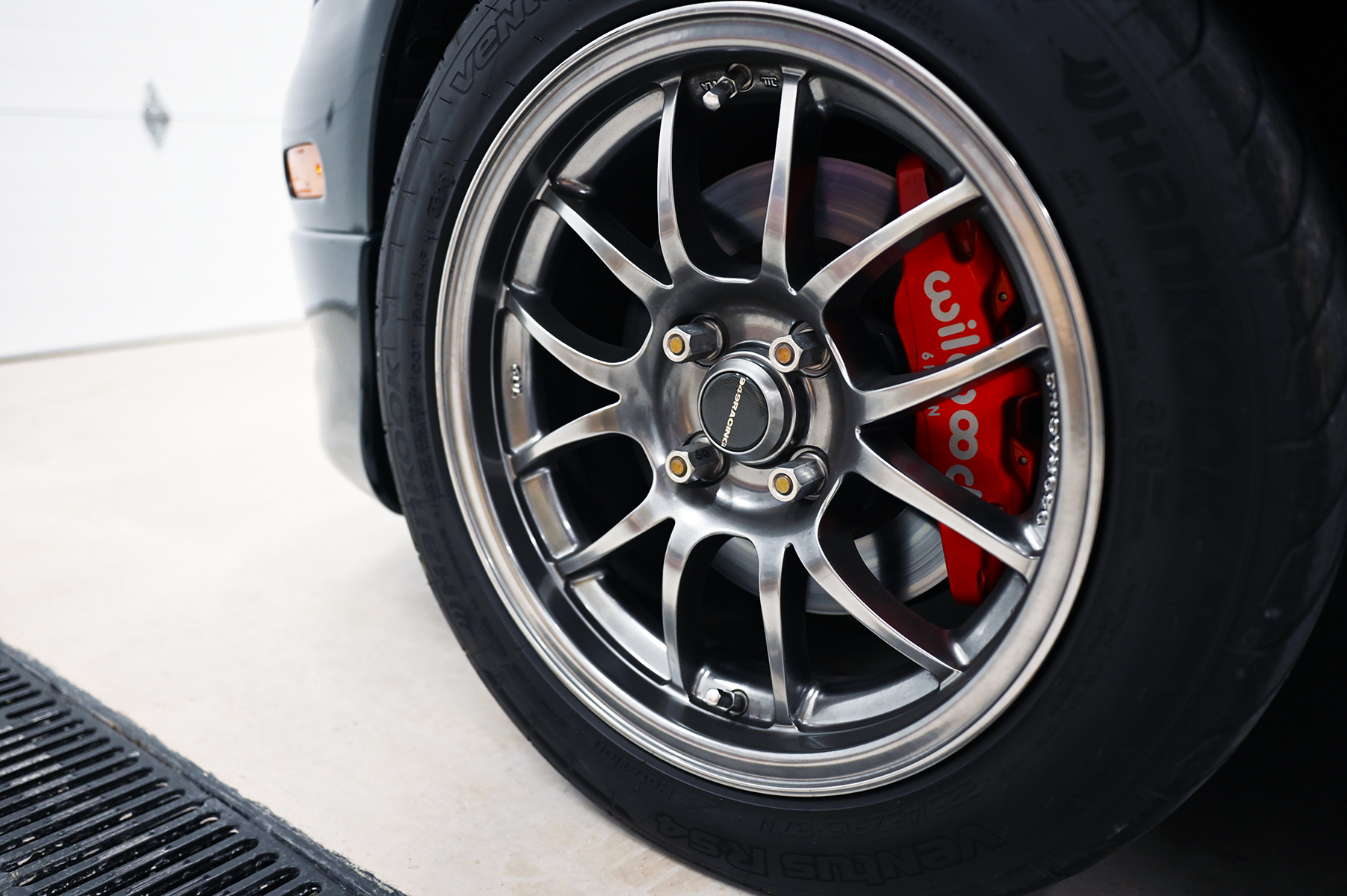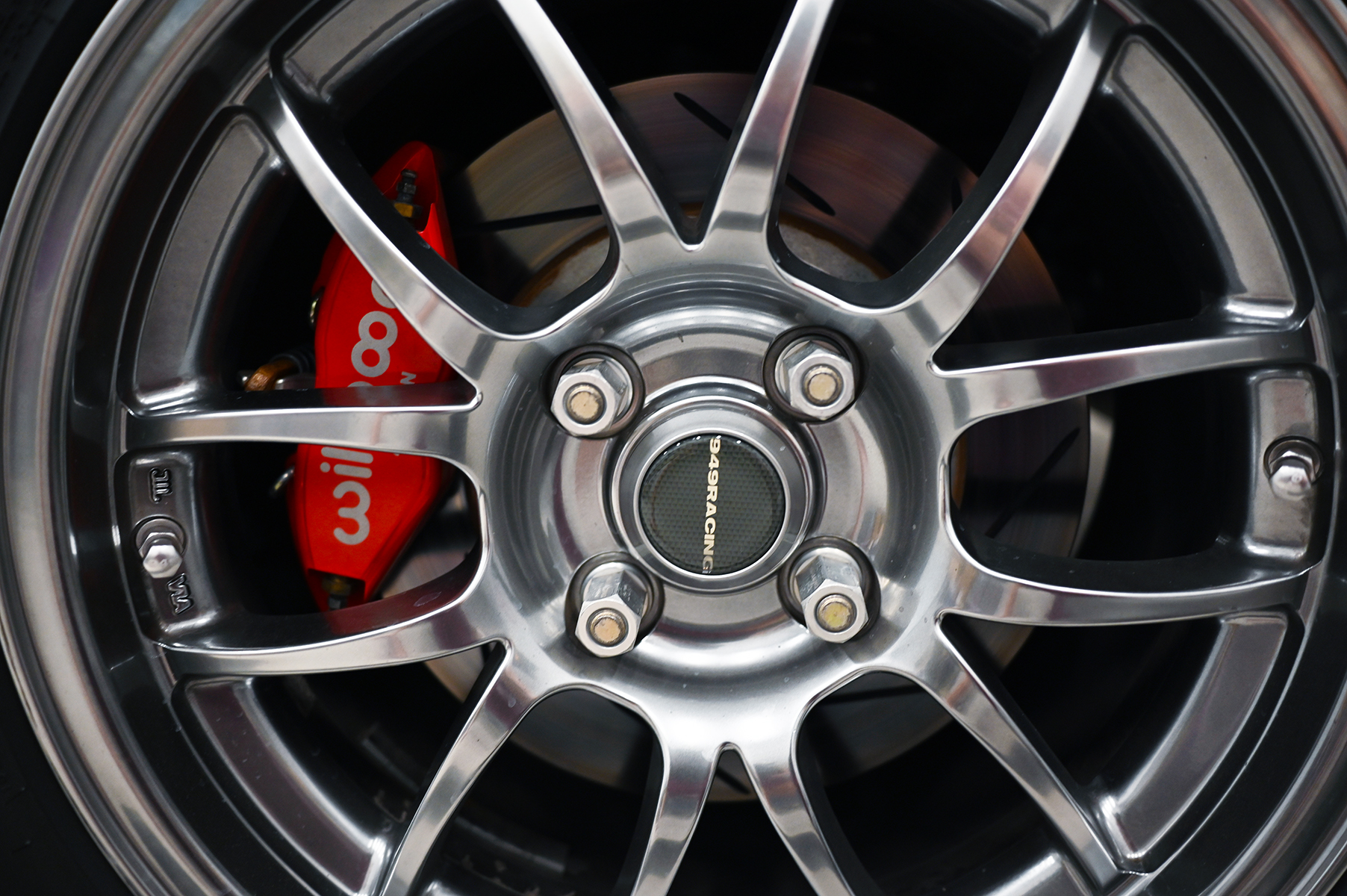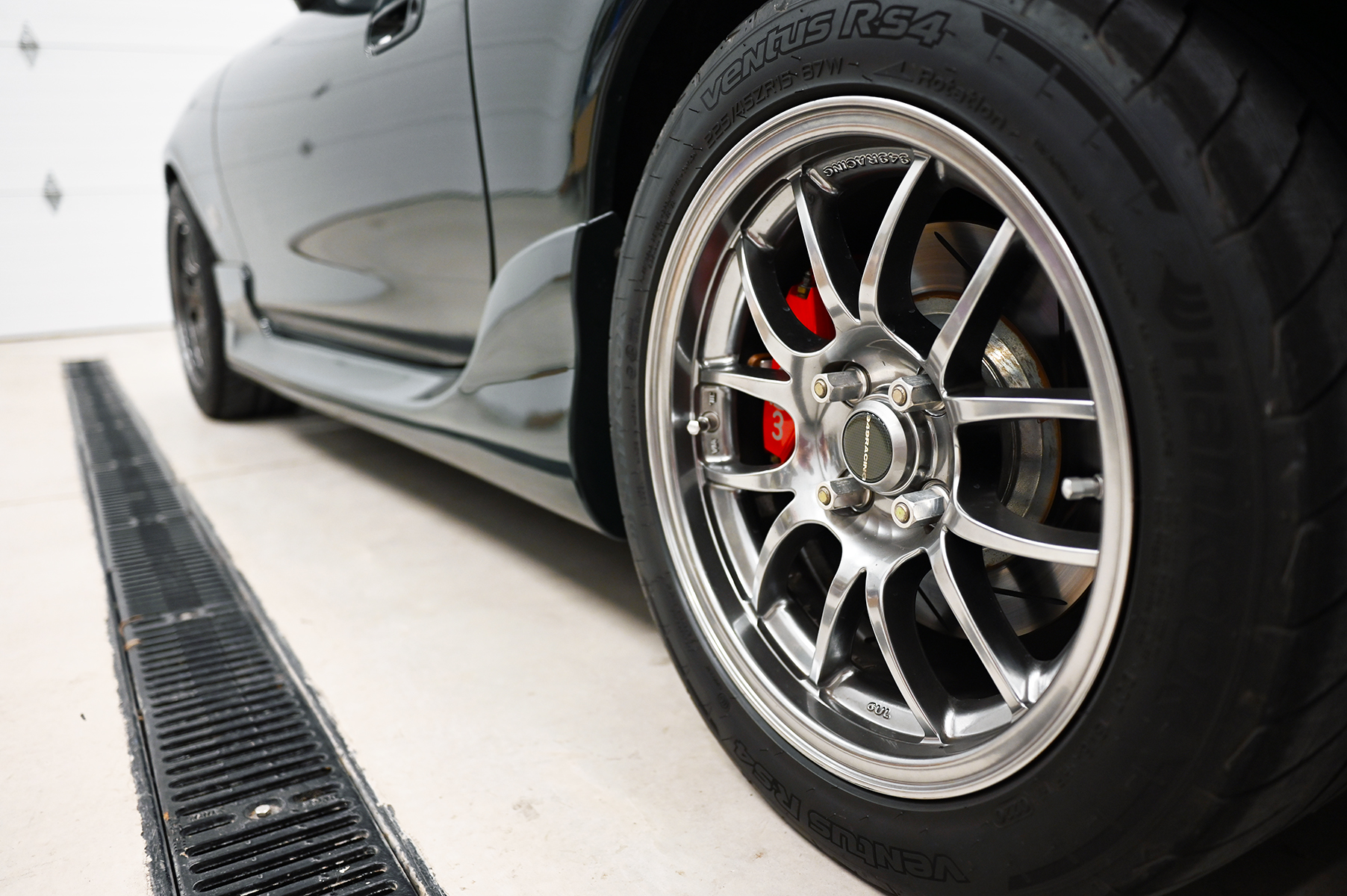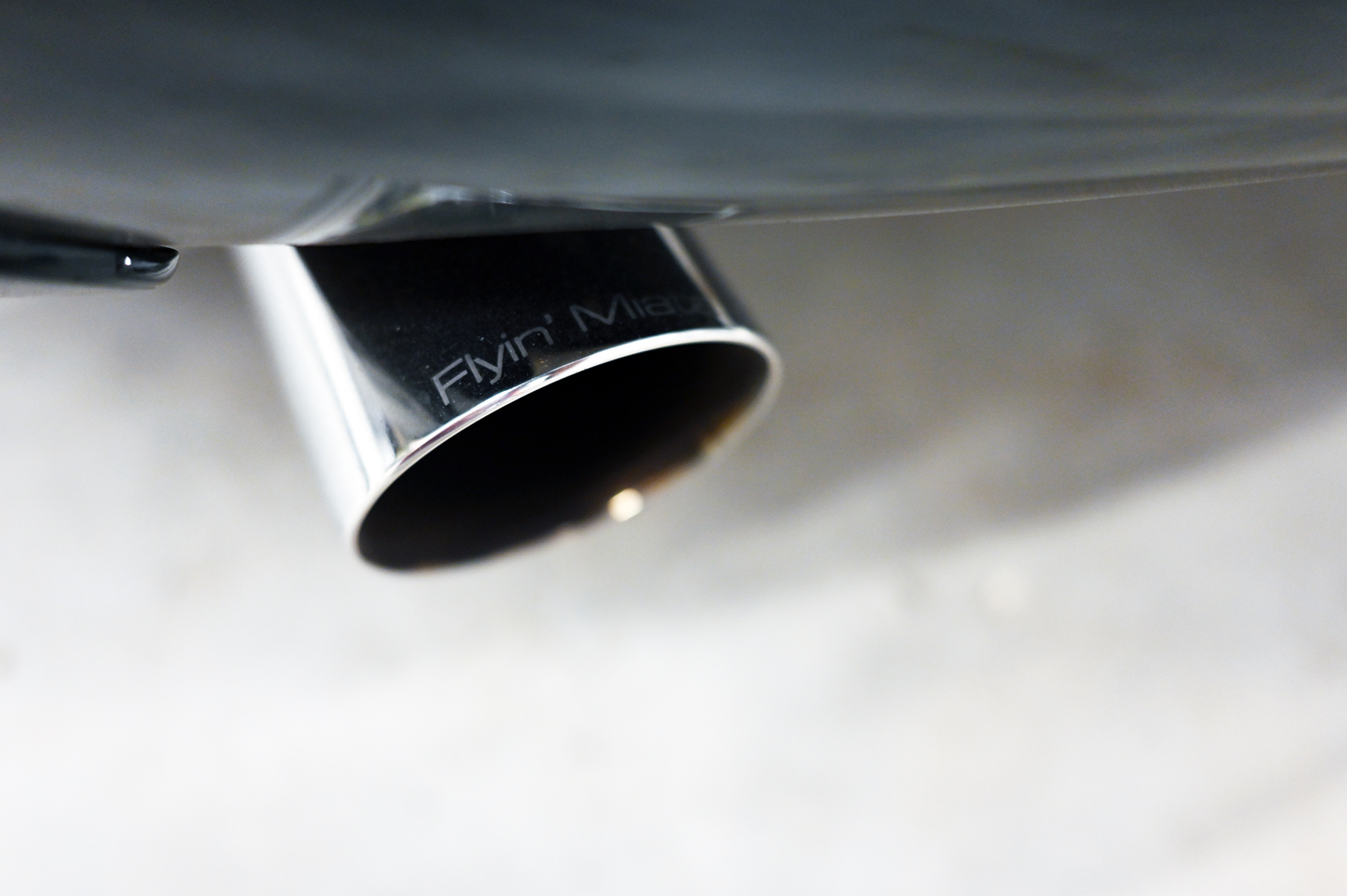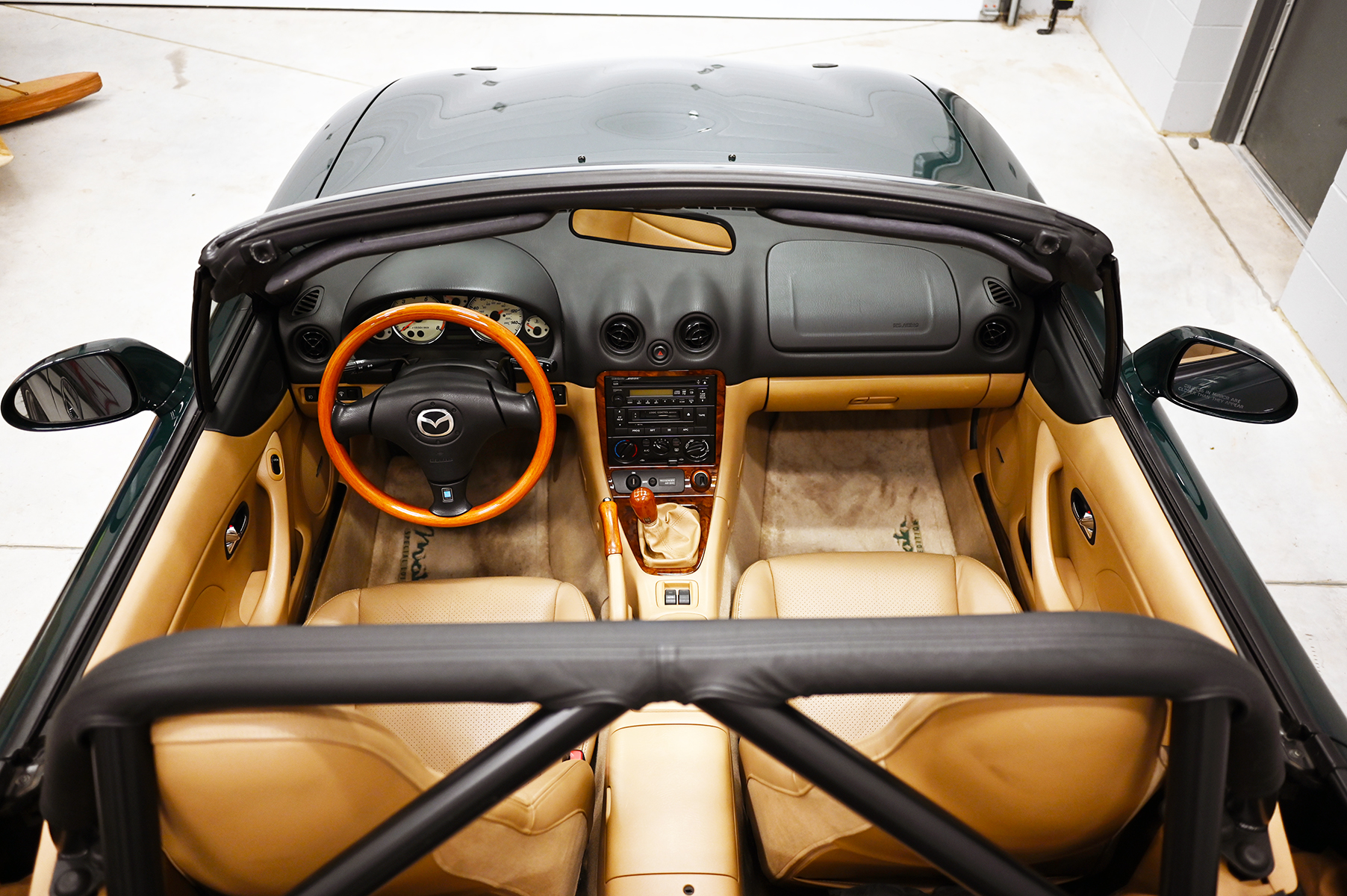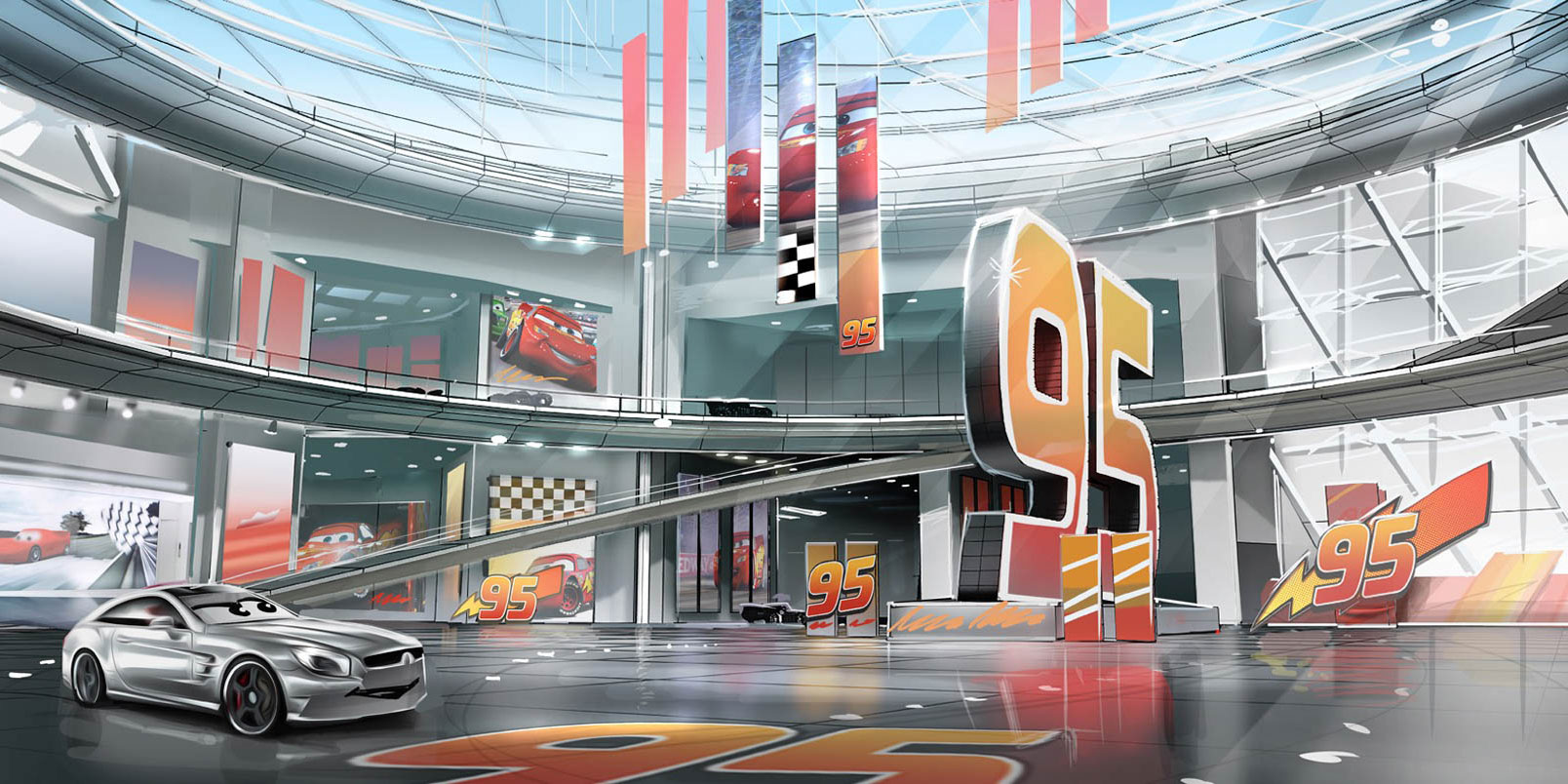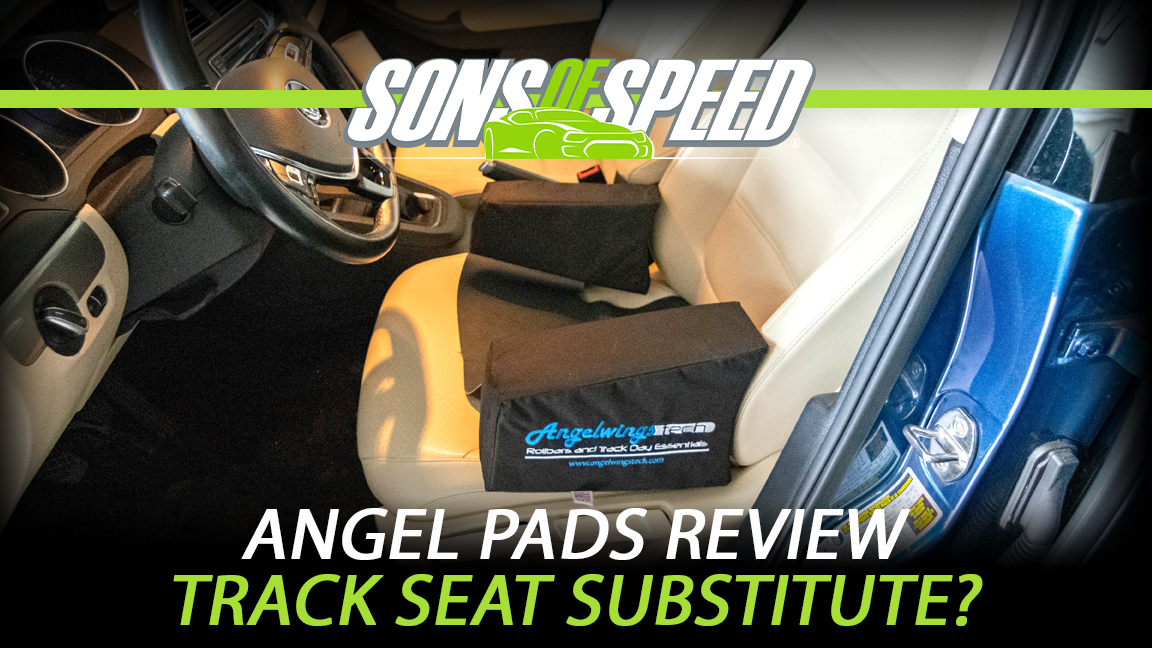Flyin' Miata: The Miata Mazda Should Be Making
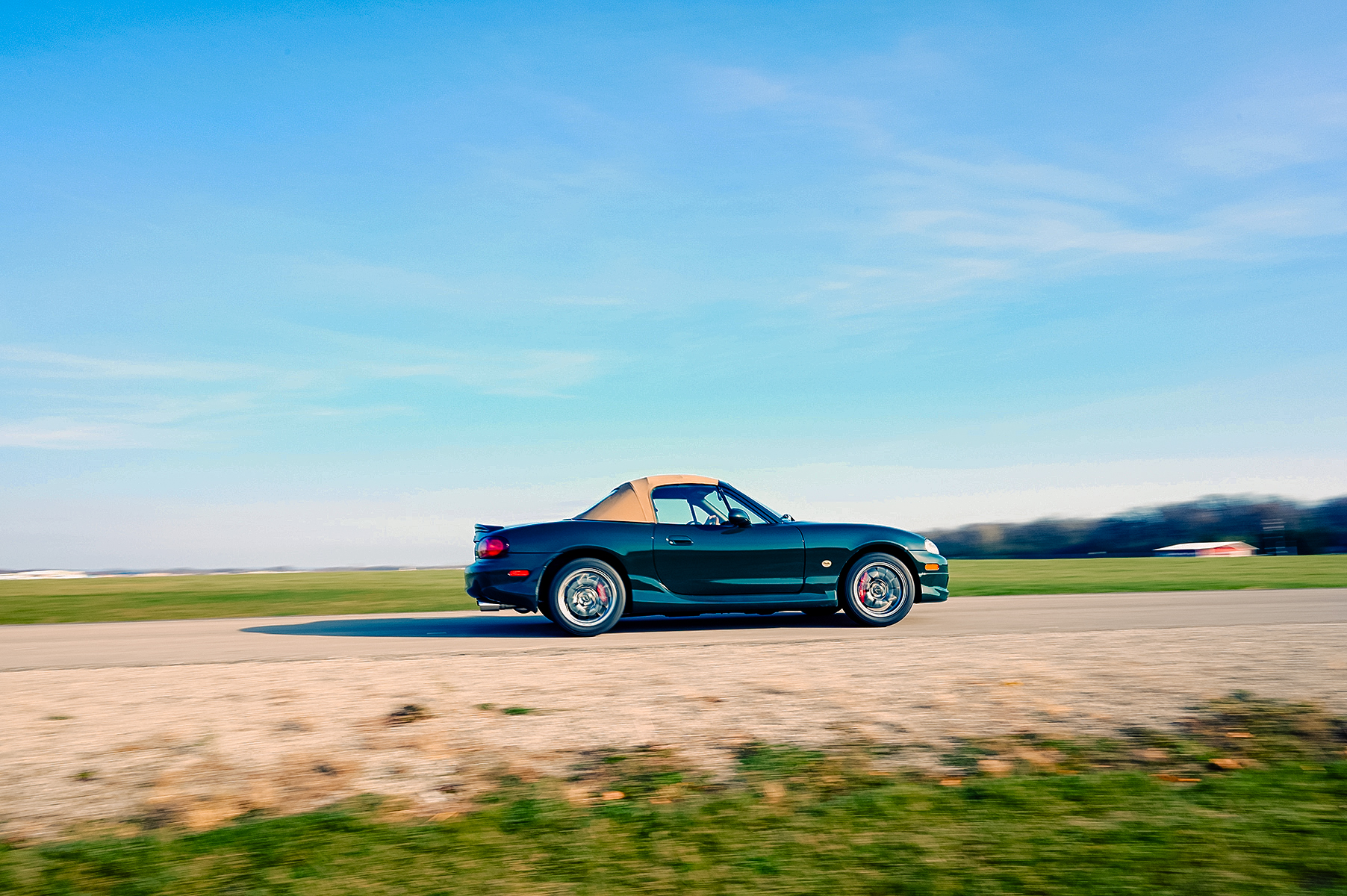
Words and Photos by Jennifer Jensen
TECH TALK
There’s something special about taking a classic car and dialing it up to an entirely different level—especially when it’s done right. That’s where Flyin’ Miata comes in. This isn’t just any old Miata with a big engine stuffed under the hood. It’s a feat of engineering that transforms the lightweight Mazda Miata into something that can stand toe-to-toe with modern supercars.
This Flyin’ Miata started its life as a 2001 British Racing Green Miata Special Edition—a model equipped with unique features like a tan leather interior and a wood steering wheel. The full transformation happened in Flyin’ Miata’s shop, where their team of engineers meticulously rebuilt nearly every part of the car to ensure it could handle the power it was about to receive.
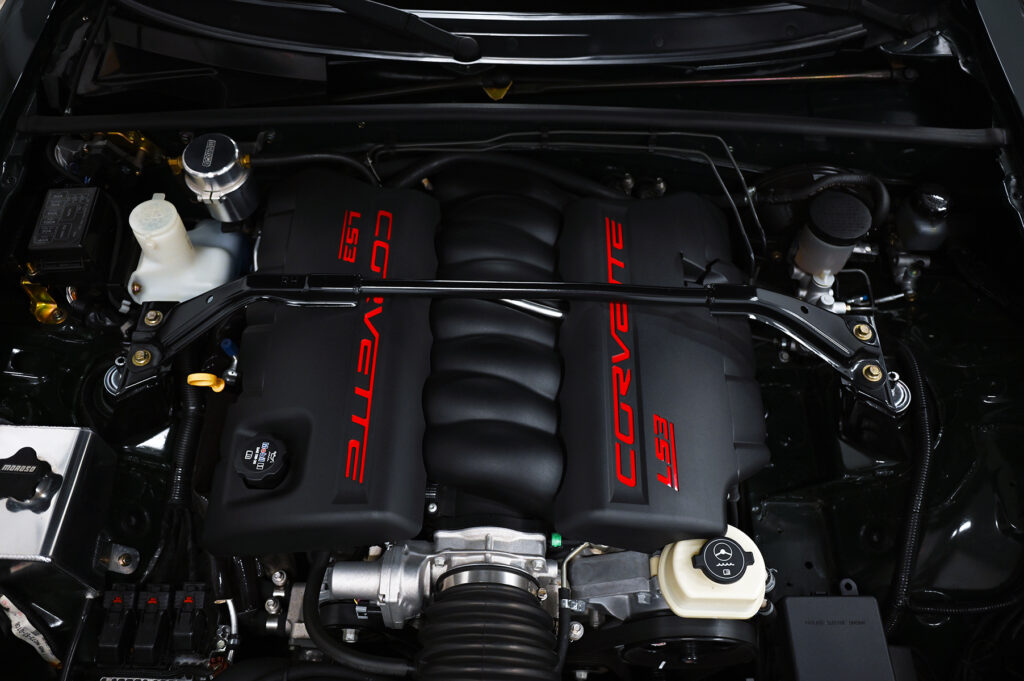
Engine and Transmission
Under the hood of this Flyin’ Miata lies a 6.2L LS3 V8 engine producing a solid 525 horsepower. And here’s the thing—Flyin’ Miata doesn’t just grab any old engine from a scrap yard. Instead, they buy a new crate engine directly from GM, a detail that underlines their commitment to quality. This specific LS3 engine isn’t just any variant either; it’s the top-end version rated for 525 horsepower straight from the factory. Dyno testing at Flyin’ Miata’s facility confirmed that this engine delivers a real-world 457 horsepower at the wheels, putting it in the same power category as high-performance modern sports cars.
The transmission is another masterpiece. It’s a Tremec six-speed, but not the standard kind—it’s called the Tremec TransZilla, built by Rockland Standard Gear. This is a fully re-engineered transmission with reinforced gears and shafts, designed to withstand the kind of punishment that 525 horsepower can deliver. So, while the name might sound like overkill, it’s built to handle every bit of that power without missing a beat.
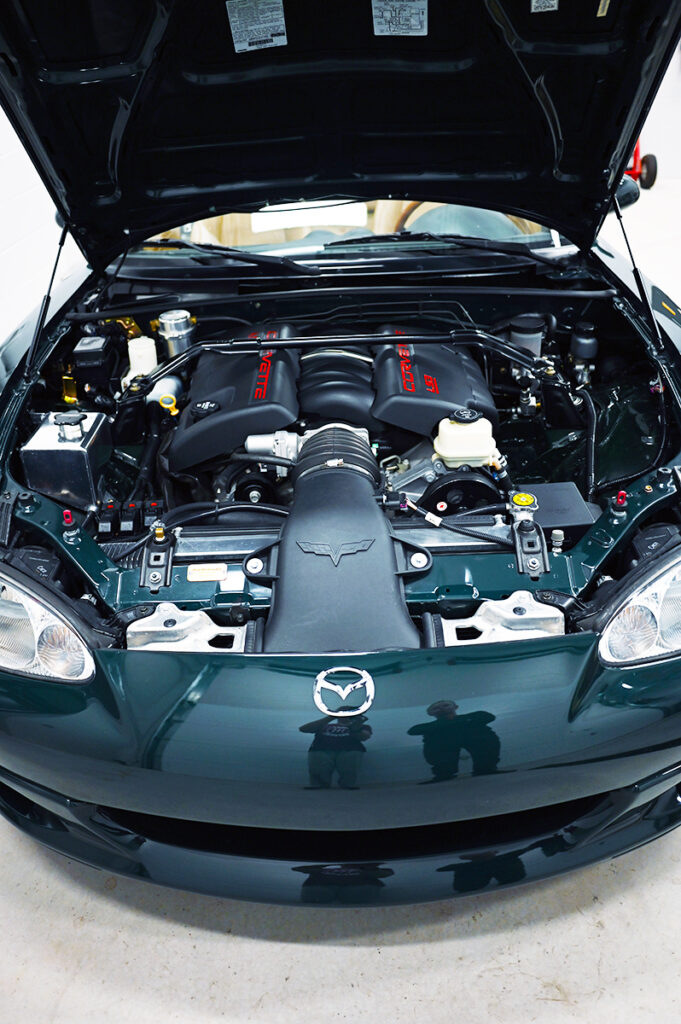
Drivetrain
Power flows from the engine to a carbon fiber driveshaft, which connects to a 3.42 geared Gatorback differential sourced from a Cadillac CTS-V—a model known for handling serious power. This ensures that every part of the Flyin’ Miata’s drivetrain is ready to handle the torque and speed that comes with being a V8-powered Miata.
Chassis and Suspension
Let’s talk about keeping the car in one piece. A Miata was never meant to handle 525 horsepower, so Flyin’ Miata reinforces the unibody structure extensively. They disassemble the car down to its frame, then seam-weld all joints and panels, far beyond the factory’s spot-welds. With added channels and braces, the unibody structure becomes incredibly rigid, providing a solid foundation for all that power.
Suspension on this Miata is handled by Fox Racing coilovers with 26-point adjustability. Unlike magnetic dampers that automatically adjust on the go, these are mechanical—yet they’re still straightforward to dial in. You can pop the hood and trunk, make a few adjustments by hand, and within minutes, transform this car from a comfortable cruiser to a stiff track-ready machine. It’s practical and precise, with settings that range from “comfy enough for errands” to “track day stiff.”
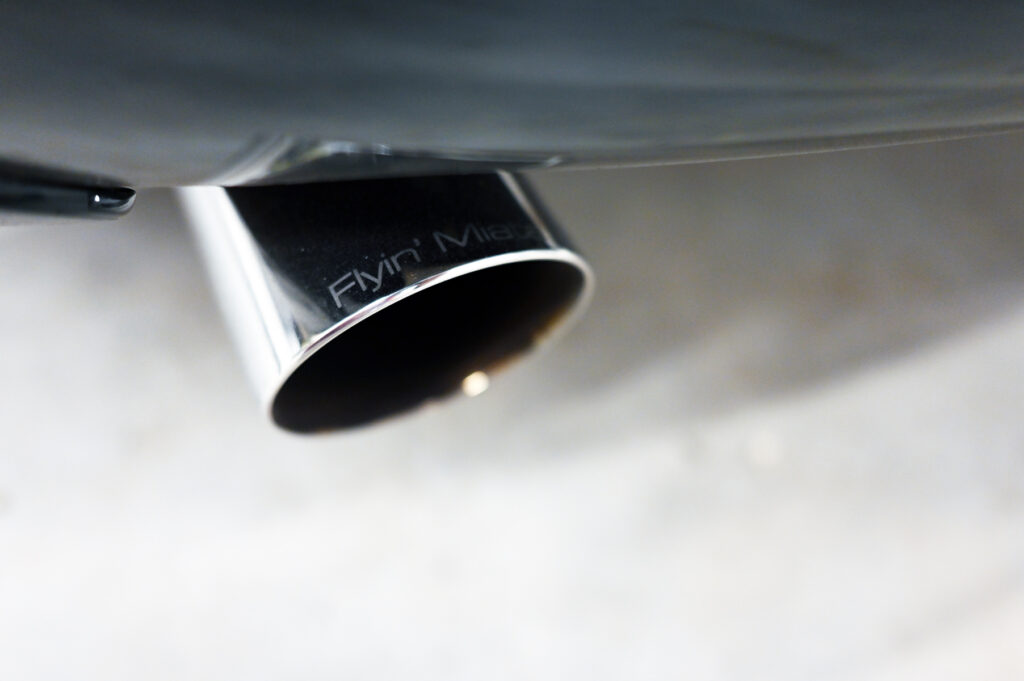
Brakes and Exhaust
A car that accelerates as quickly as the Flyin’ Miata also needs to stop just as fast. For that, Flyin’ Miata equips Wilwood brakes: six-piston calipers at the front and four-piston at the rear. These brakes, along with true dual exhaust pipes (each with catalytic converters), ensure that the car performs as well on the street as it does on the track.
With all these changes, the Miata’s weight increases by a little over 200 pounds. Despite the larger engine, it maintains a near-ideal 54/46 weight distribution, up from the stock 52/48. It’s still a lightweight 2,615 pounds, giving it a supercar-level power-to-weight ratio of around five pounds per horsepower—a stat comparable to a McLaren GT.
DRIVING IMPRESSIONS
Now, you’re probably wondering how all that tech translates into the driving experience. I can sum it up: this Flyin’ Miata is the Miata Mazda should have built all along.
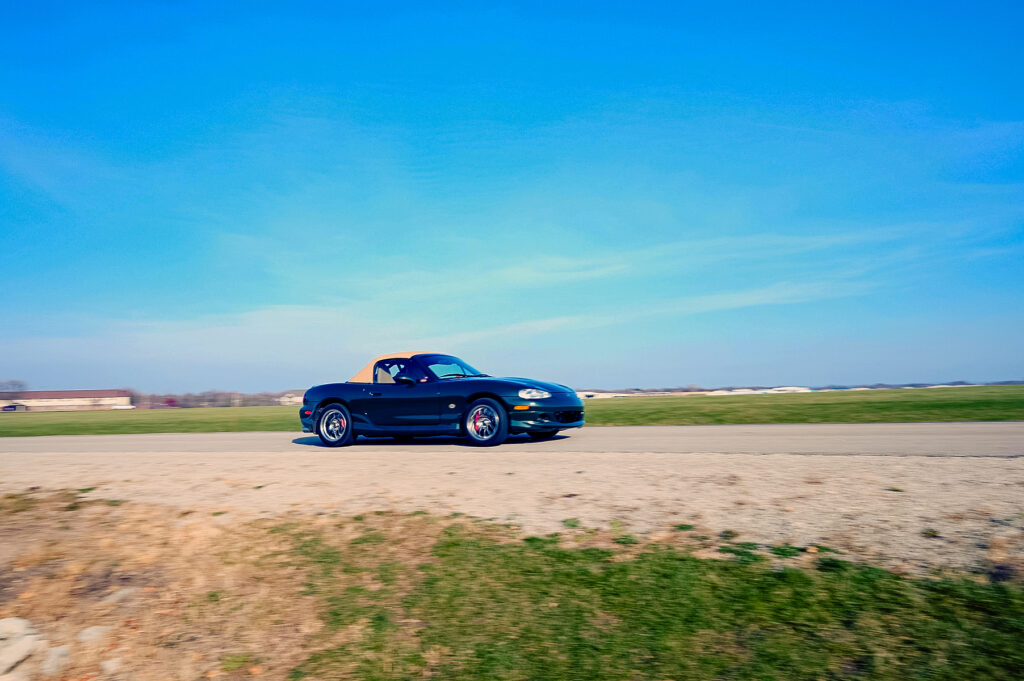
Power and Performance
Hit the gas, and this Miata turns into a rocket. The LS3 V8 delivers power that’ll push you back in your seat, and the Tremec TransZilla shifts with a satisfying, mechanical click-clack that feels immensely rewarding. It’s not just the rush of speed—it’s the sound. That deep, rumbling exhaust note fills the cabin and the cabin of any other car around you, adding to the sensory overload in the best possible way. This car isn’t about refined noise; it’s about a visceral experience.
It’s important to keep in mind that the Flyin’ Miata doesn’t come with launch control or stability aids, but that just adds to the thrill. You’re in control, managing the traction and stability with your right foot and, of course, your brain.
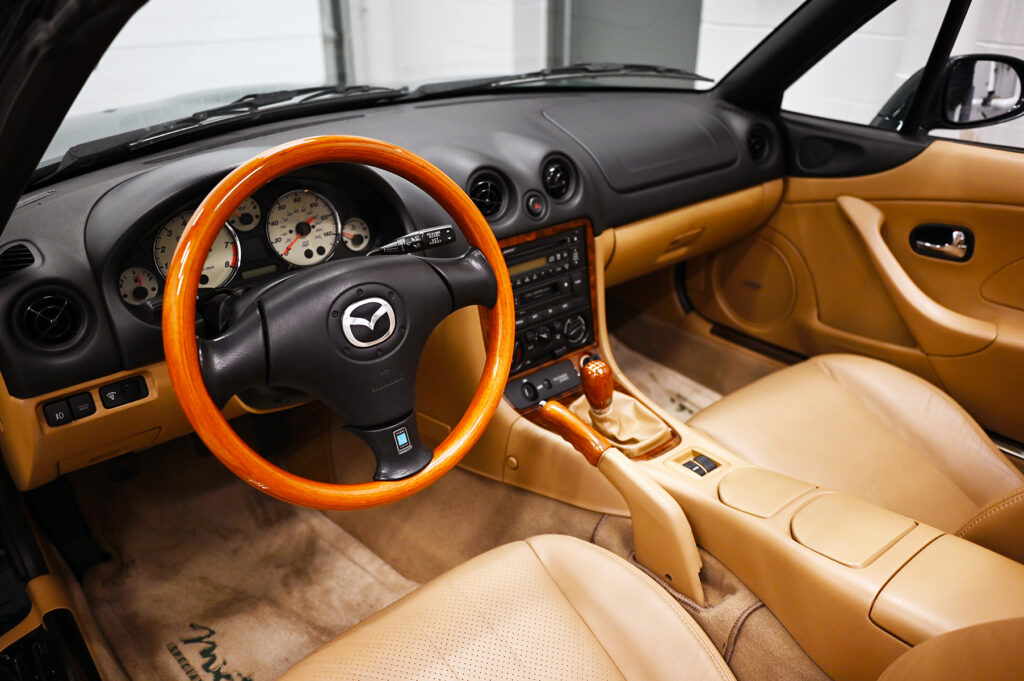
Steering and Handling
Driving the Flyin’ Miata is an exercise in precision. Every input feels immediate, every twist of the wheel translates directly to movement. There’s no numbness here—just direct, unfiltered response. The Fox Racing suspension manages to soak up road imperfections without sacrificing the feel of the road. It’s rare for a car this powerful to ride so comfortably over rough roads. You could drive this car daily without sacrificing your spine.
But let’s be clear: the Flyin’ Miata is still a Miata at heart. Yes, it’s faster and louder, but it retains that light, agile feel. The weight distribution remains spot on, and it dances through corners with the same nimbleness we’ve come to expect from Mazda’s iconic roadster. Flyin’ Miata went above and beyond to keep the balance right, and it shows.

Braking and Control
If there’s one downside to the Flyin’ Miata’s performance, it’s that the brakes need some warming up. Despite the Wilwood hardware, they feel a bit underwhelming at lower speeds, especially in cooler weather. But give them some heat, and they start to bite harder, making it clear that they’re up to the task of taming this beast.
And you’ll need them. This car accelerates so quickly that you’ll find yourself braking harder and more frequently than in the standard Miata RF. The Wilwoods do a commendable job when warm, but I would love to see an even more responsive setup to match the explosive acceleration.
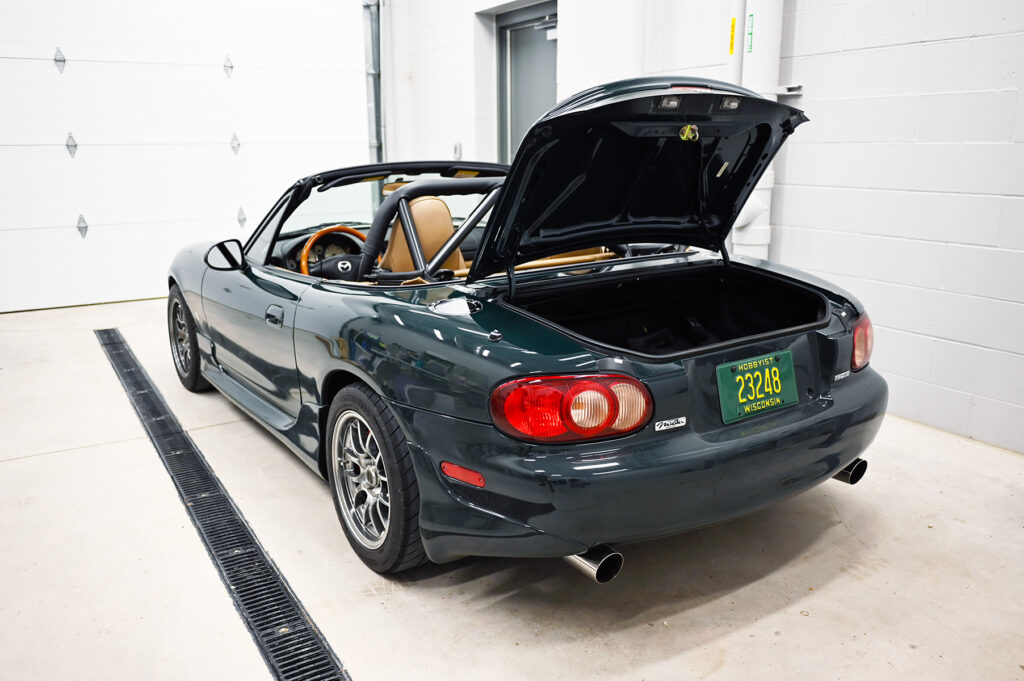
Practicality (or Lack Thereof)
Storage is about what you’d expect for a Miata, though there’s enough trunk space for a couple of weekend bags, if you pack smart. Visibility is decent, but the lack of driver aids means you need to be on high alert. Think of it like a motorcycle; you’re responsible for staying out of harm’s way, as most other drivers might not even see you.
One area where the Flyin’ Miata retains a surprising amount of comfort is in the cabin. The adjustable suspension means you can dial in the ride quality to suit your preference, whether you’re carving up a canyon road or running errands. It even has air conditioning and cruise control, so you’re not sacrificing every creature comfort for performance.
Comparing the Flyin’ Miata to the Mazda Miata RF
So how does this beast stack up against the standard Miata RF? It’s a world of difference. The Miata RF, with its modest four-cylinder engine and a lightweight, balanced setup, is all about the purity of a lightweight roadster experience. You wind it out to its redline, flick through the gears, and get that classic Miata smile without breaking any speed records.
The Flyin’ Miata, on the other hand, is a full-on performance machine. It’s about raw power and the adrenaline of a car that can match supercar stats on a straight line. While the Miata RF is like a well-tailored suit, the Flyin’ Miata feels more like a pair of ripped jeans and a leather jacket—edgy, thrilling, and a bit dangerous. If the Miata RF is for the purist, the Flyin’ Miata is for the thrill-seeker.
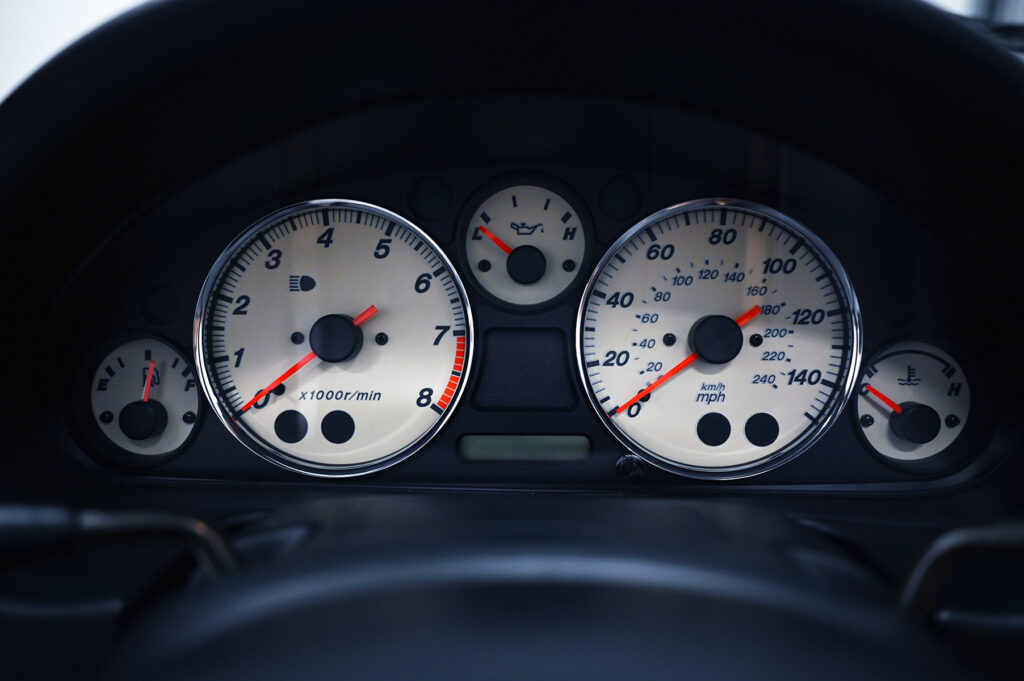
Final Verdict
The Flyin’ Miata is an automotive masterpiece, plain and simple. It takes everything you love about the Miata and turns it up to eleven. You’ve got supercar power in a car that still manages to stay true to its Miata roots, with minimal weight gain and a near-perfect weight distribution. It’s raw, it’s loud, and it’s wildly fun to drive.
Compared to the Mazda Miata RF, this Flyin’ Miata feels like a different breed entirely. Where the RF is balanced and refined, the Flyin’ Miata is visceral and exhilarating. Both cars are brilliant in their own right, but if you want the ultimate Miata experience, Flyin’ Miata has built it. This is the Miata Mazda should be making, and once you drive it, you won’t look at the RF—or any other Miata—the same way again.
